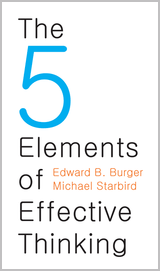 Following are some of my thoughts about engagement and what it means for a college of business. I presented these thoughts a couple of years ago at a conference. Here is a summary:
Following are some of my thoughts about engagement and what it means for a college of business. I presented these thoughts a couple of years ago at a conference. Here is a summary:
“Engagement” in a college of business is an often misunderstood term. This stems from the fact that there are three dominant perspectives on how engagement is conceptualized and viewed within the business school – (1) community engagement (Carnegie Foundation), (2) student engagement (National Survey of Student Engagement), and (3) faculty engagement (AACSB).
The Carnegie Foundation for the Advancement of Teaching awards a community engagement classification to qualifying institutions of higher learning. As of 2012, three hundred and eleven (311) U.S. colleges and universities were designated with the Community Engagement Classification. Carnegie defines community engagement as
“ … the collaboration between institutions of higher education and their larger communities (local, regional/state, national, global) for the mutually beneficial exchange of knowledge and resources in a context of partnership and reciprocity.”
In order to be selected, institutions must provide descriptions and examples of established practices of community engagement that show alignment among mission, culture, leadership, resources and practices. The notion of a mutually beneficial partnership is at the heart of the Carnegie Foundation’s concept of engagement.
The National Survey of Student Engagement (NSSE) assesses collegiate quality by estimating how undergraduate students spend their time inside and outside the classroom. Through an annual survey of hundreds of colleges and universities, the NSSE estimates how undergraduates spend their time and what they gain from attending college. The NSSE ultimately measures student engagement through five Benchmarks of Effective Educational Practice:
- level of academic challenge
- active and collaborative learning
- student-faculty interaction
- enriching educational experiences
- supportive campus environment
Institutions use their data to identify aspects of the undergraduate experience inside and outside the classroom that can be improved through changes in policies and practices more consistent with good practices in undergraduate education.
AACSB International, the organization best known for overseeing accreditation for undergraduate, master’s, and doctoral programs in business and accounting, strives to identify challenges and trends that are facing the business education industry through its research and initiatives. In 2011, the Blue Ribbon Committee (BRC) on AASCB Accreditation Quality was charged to conduct a review of AACSB accreditation standards and processes. The BRC identified “encourage an appropriate balance of academic and professional engagement consistent with quality in the context of a school’s mission” as one of five critical issues is business school accreditation. The BRC stated that AACSB standards have consistently promoted an academic focus, but have not adequately addressed engagement with practice and also suggested placing a stronger emphasis on interaction among students and faculty in an academic setting. Engagement, as specified by the AACSB, is ultimately assessed through faculty engagement whereby
“Engagement should be addressed as a portfolio, and is embedded in the interaction between participants, including academic and professionally qualified faculty, who are engaged in scholarship and teaching. Furthermore, engagement should be addressed across multiple dimensions of quality—students, faculty, curriculum, pedagogy, etc.—and consistent with the mission of the school.”
I hope that my thoughts help.
– from the pen of Dr. Percy Trappe


